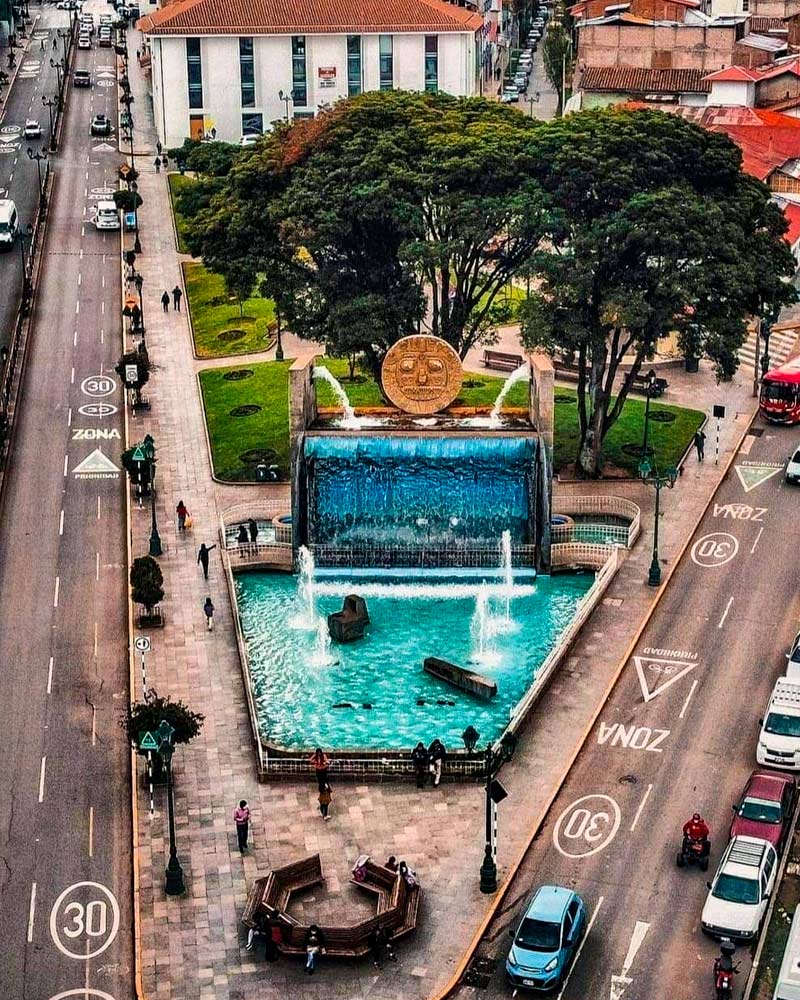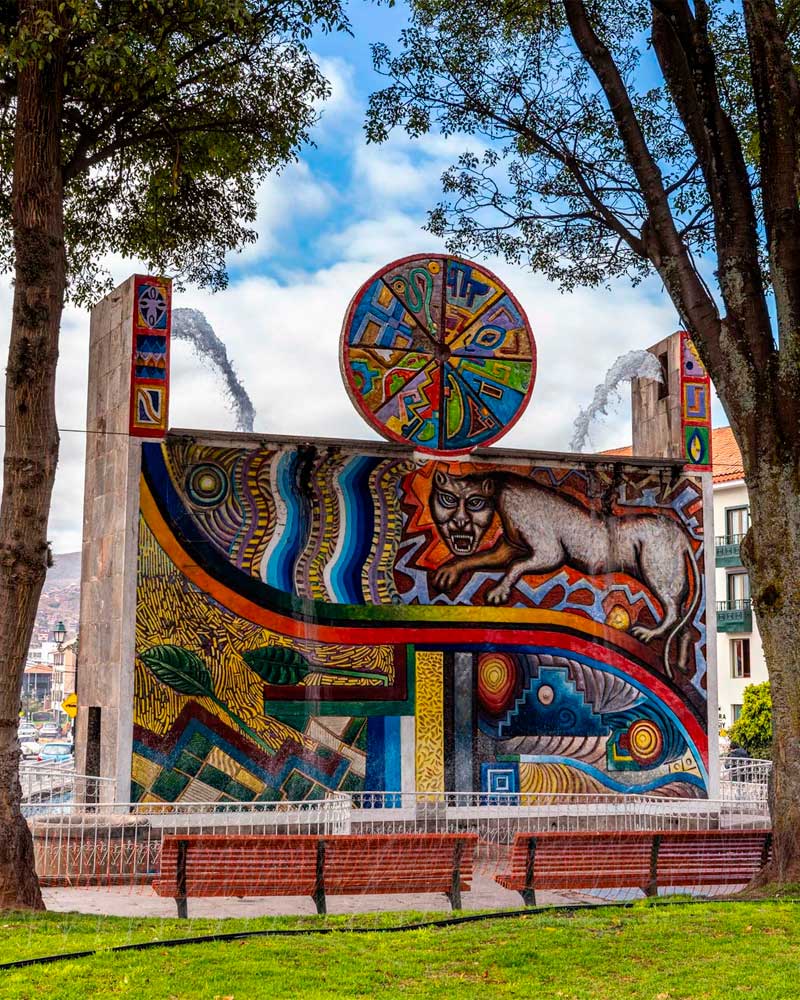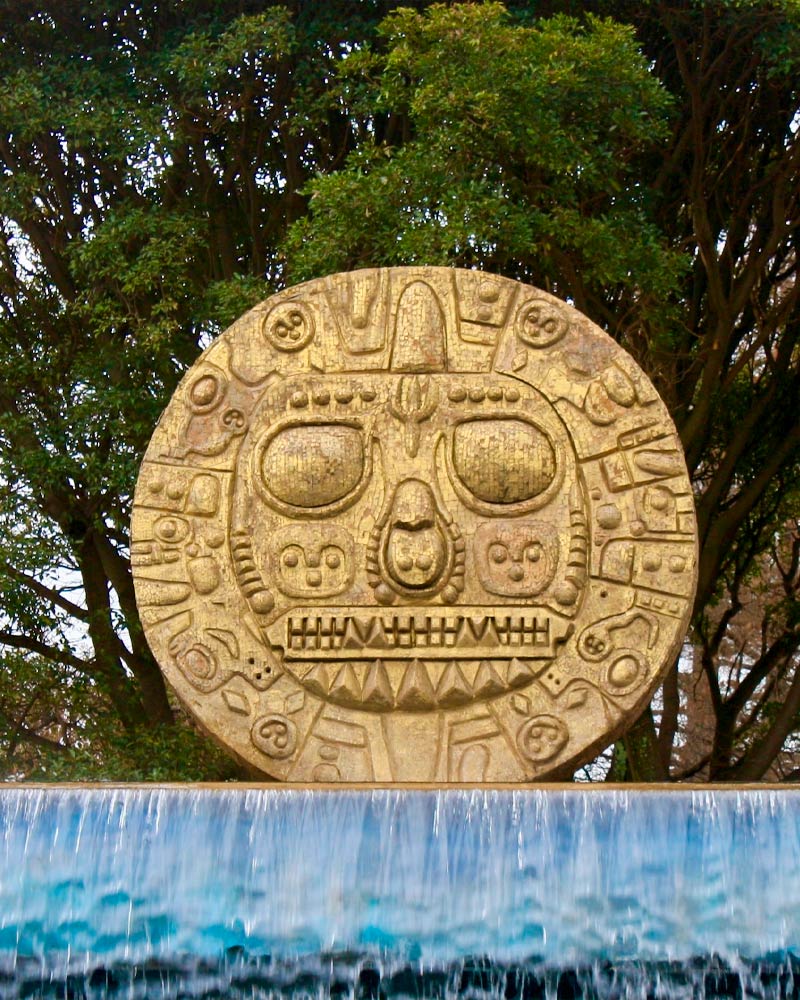
When you walk through the streets of the city of Cusco, you will find a variety of buildings, where ancient Inca walls still stand as a testament to the greatness of the Tahuantinsuyo. When the Spanish conquerors arrived, they built churches, convents, and colonial mansions on these solid stone foundations, creating a unique architectural fusion that distinguishes this place.
The plazas of Cusco, open and bustling, continue to be key spaces in the city's life. People converse, celebrate, and trade there, keeping many local customs present. What's more, some of these plazas were already important in Inca times, and today they remain meeting points for locals and visitors.
Among the most outstanding attractions when exploring the imperial city is Orellana Pumaq Chupan Park, a popular spot among tourists. This park stands out for its paccha or water fountain, accompanied by a mural that highlights the city's cultural identity.
The Paccha de Pumaq Chupan is located on Av. el Sol and Av. Tullumayo, walking from the Plaza de Armas of Cusco, it will take you approximately 15 minutes.
This fountain has become one of the most striking points in the city of Cusco. Its name comes from Quechua: PACCHA (water fountain), PUMAQ (of the puma), and CHUPAN (tail), which translates to "water fountain at the puma's tail." This detail is not casual. According to ancient Andean maps, the city of Cusco was designed in the shape of a puma, and this fountain is located exactly in the part that would symbolize its tail.
The waterfall measures approximately 7 meters high by 10 meters wide, and is designed so that visitors can pass behind the water, take photos, and enjoy a different moment right in the city center. Its main cascade is fed by two side jets, representing the confluence of the Saphy and Tullumayu rivers, historic tributaries that cross Cusco and had significant symbolic value in Inca times.
The total structure reaches 9 meters in height and integrates an upper pool, an inner passage, and two access bridges. The back wall is decorated with a low-relief mural that mixes Andean and modern elements, while six vertical jets and two whirlpools flow from the upper part.
The paccha mural is the second outstanding part of this place, if you are one of the observant people, you will be able to notice the following images:
During the year, Cusco goes through two well-defined seasons, the rainy season generally begins in the month of November and ends in the month of March. The dry season begins in the month of April and ends in the month of October, becoming the best season of the year for trips in and out of Cusco.
Between these months the Cusco climate is really pleasant, with the presence of blue skies during the day. However, it is recommended to bring warm clothing for the cold nights and mornings of Cusco.
 |  |  |
Beyond the majesty of Machu Picchu, the surroundings of Cusco offer a variety of experiences that allow you to discover the culture, history, and landscapes of the Andean Peru. From traditional towns to little explored natural wonders, there is much to discover and adventures to experience just a few kilometers from the imperial city. So, if you are looking for new off the beaten path adventures, here are some places and activities that you cannot miss: